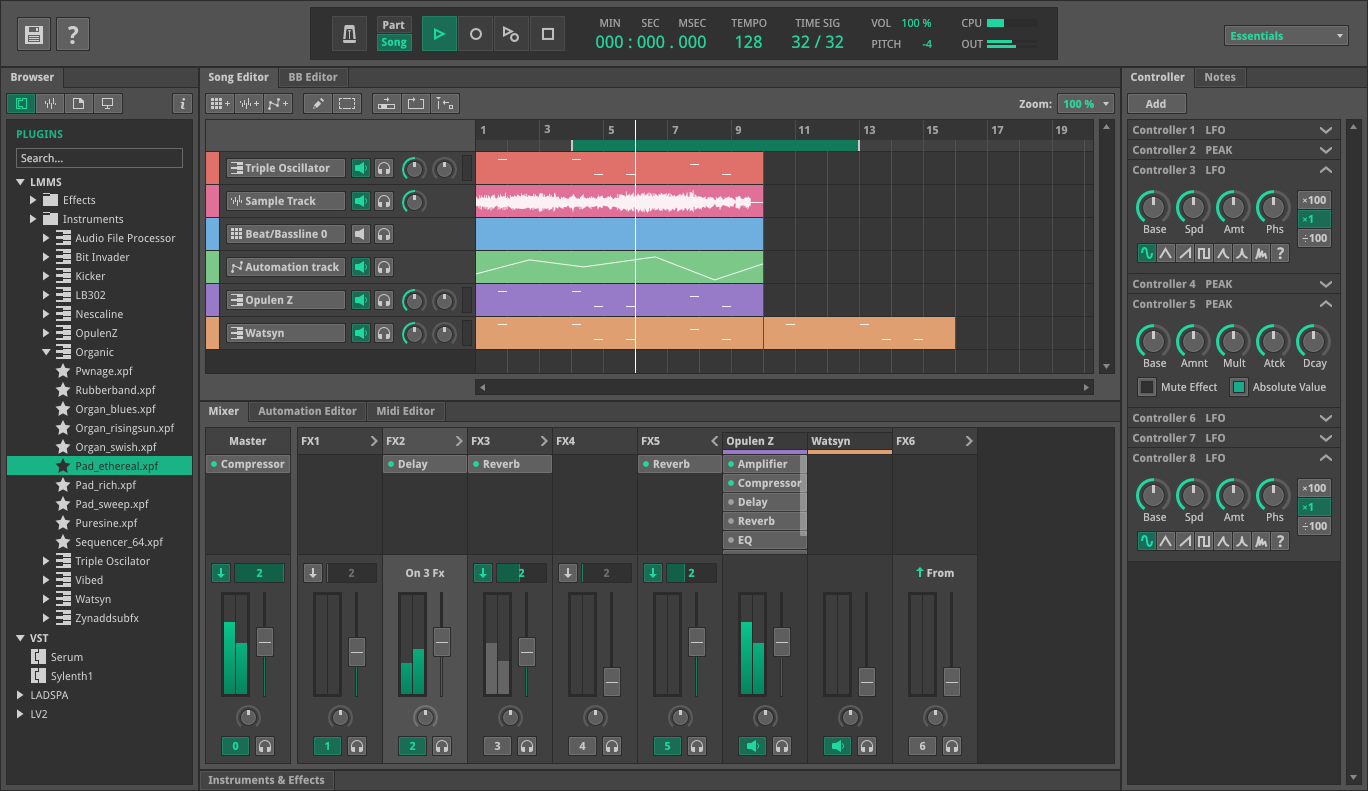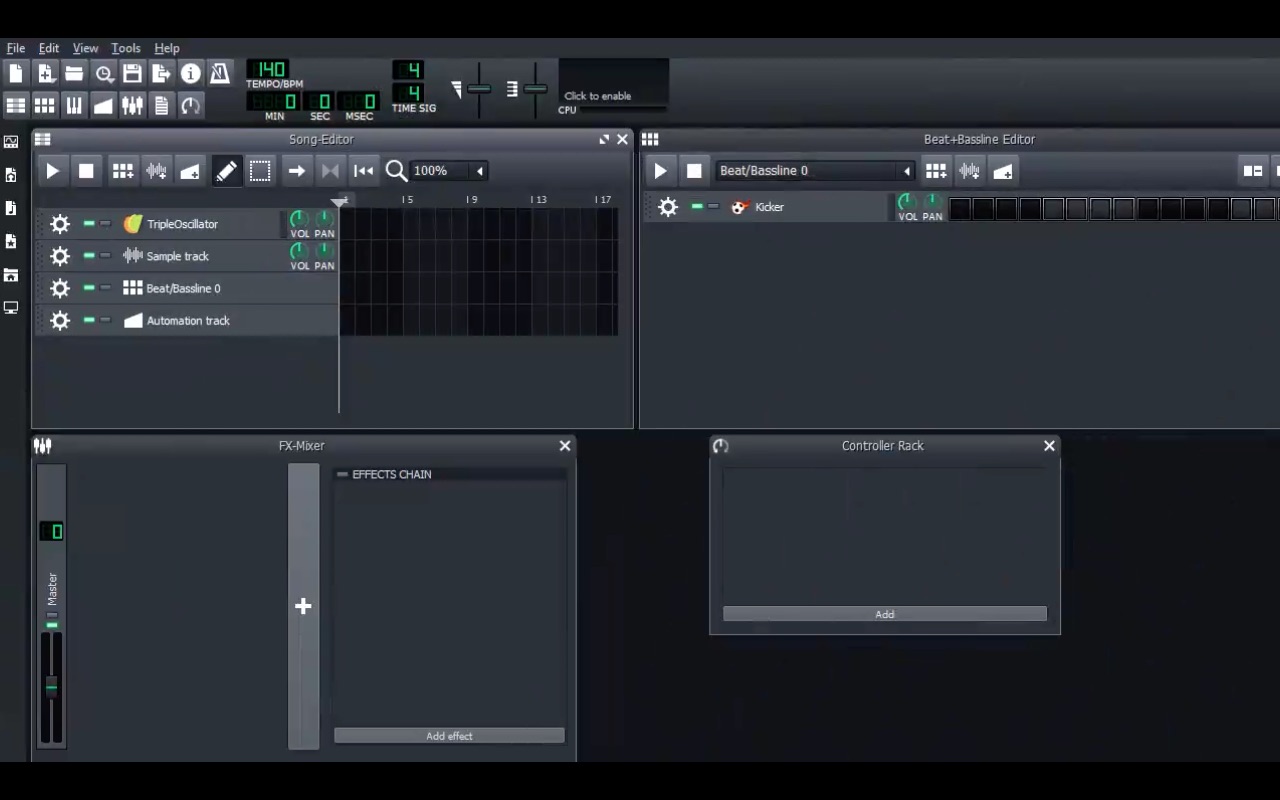

Like samples, selecting each entry will give you a sample of the instrument however, the note played will usually be A4 (two tones below C5).Īlso, the sounds are generated dynamically and will require more CPU power. The plugin category with the most instruments is ZynAddSubFX where there are numerous folders containing hundreds of instruments in your repertoire. Here are predefined instruments that have been created using the various plugins. Instrument presets are located in the presets tab. Pressing an entry in the list will play the sound so you can decide what you wish to use in your projects. WAV format is also supported as well for custom samples. The sound samples are located in the samples tab and are in OGG format. These are accessible from the aforementioned sidebar on the left-hand side. LMMS comes with a huge collection of sound samples and instrument presets. All of this was done in the GIMP.In later tutorials, I will explain the rest of the interface in further detail.
Lmms effects full#
He took pictures of a ball resting on the chrome bars of cymbal stands, replaced the ball with an image of the full moon, added motion blur, and added the night sky and piano roll views in the background. I like the changes he made to the song, especially the modulin sound. I gave him some suggestions about mixing and mastering, but the finished product is very much his own. He did this song pretty much by himself, with very little guidance from me. (I can’t wait until he installs Gentoo someday!) I gave Heinz an old laptop a few months ago, and he very promptly installed Debian Linux on it. I did add an equalizer to the master bus, though. I didn’t add any other compressors or limiters to the mix because I feel that a well-balanced mix can speak for itself, and doesn’t need any help from a compressor or limiter. Alan also added a compressor to it to make it more ‘punchy’. Turns out, I ended up tuning it to the key the song was in. I liked it it has a really good sound, though I added a pitch-shifter to the snare-drum to put it in a different sonic space. Not sure if this is a bug or not, but it was preety annoying.įor the drums, I used the Black Pearl drumkit from AVL Drumkits LV2. I also learned not to use the panic-button in the top-left corner of the Ardour screen, because it would reset the portamento on the Modulin sound. In the end, I just gave up and made a sound that suited the mix. I wasted a lot of time trying to get it to sound exactly right. For some reason, I just couldn’t get it to sound like Martin Molin’s modulin. I used modified presets for all of the instruments, actually, except for the Modulin sound at the end. It’s pretty intuitive and comes with a lot of presets. However, the effects plugins in Ardour are easier to understand because they have graphical interfaces in LMMS, they just present themselves as a bunch of knobs, and you can’t see what you’re doing.Īll the instruments (except the drums) used Yoshimi, which I like. In Ardour, I had to zoom in every time I wanted to edit a track this got kind of annoying because I was doing it on my laptop and I didn’t have a mouse. I like how in LMMS, when you double-click on a region, the piano-roll editor pops up.
Lmms effects software#
It’s great software and I really like it. This was also my first project in Ardour. I decided to make my own audio-only version, and I expanded on the original song, adding key changes and new instruments. I think that’s why, in the video, the same few animations are repeated over and over. In the video description, he says that he did all the animation by hand. I love how the balls accelerate in such a natural, fluid way.

This song is my own version of this video by Derek Hugger.
Lmms effects download#
Heinz Sander – “The Ball Machine” (based on a song by Derek Hugger) | download mp3 Heinz’s Produktion Notes


 0 kommentar(er)
0 kommentar(er)
